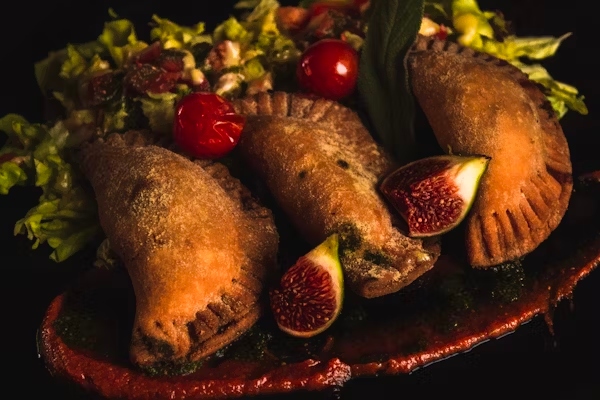BLOG
Levapioli: The Art and Tradition Behind This Delicious Dish

f you’re a food lover searching for your next culinary adventure, look no further than Levapioli. This dish is not just a meal; it’s an experience steeped in rich history and tradition. Originating from the heart of Mediterranean culture, Levapioli combines unique flavors with time-honored techniques that have been passed down through generations. Each bite tells a story—of families gathering around tables, laughter shared over delicious food, and vibrant cultures thriving through their cuisines. If you haven’t tried Levapioli yet, get ready to embark on a mouthwatering journey that will leave you craving more!
The Ingredients and Preparation of Levapioli
Levapioli is a delightful dish that marries simple ingredients with rich flavors. At its core, it features ground meat, typically a mix of beef and lamb. This blend creates a juicy and tender bite.
The preparation begins with seasoning the meat. Common spices include garlic, paprika, and black pepper, which infuse depth into every morsel. Some recipes even call for fresh herbs like parsley or mint for an extra layer of freshness.
Once seasoned, the mixture is shaped into small patties or sausages. Traditionally, these are grilled to achieve that perfect charred exterior while maintaining a succulent interior.
Served hot off the grill, Levapioli often pairs wonderfully with pita bread or flatbreads. Additions like diced onions and yogurt sauce elevate the experience further by balancing richness with zestiness. Each element plays a role in creating this beloved dish enjoyed across various cultures.
The Traditional Way of Serving Levapioli
Levapioli is traditionally served in a way that reflects its rich cultural history. Often, it’s placed on a wooden platter or woven basket, giving a rustic touch to the dining experience.
The dish comes with sides like fresh vegetables, pickles, and sometimes tangy sauces. This variety adds layers of flavor and texture that enhance each bite.
In many regions, it’s common for families to gather around as they enjoy Levapioli together. Sharing this meal fosters connection and conversation among loved ones.
Another delightful aspect is the use of flatbreads. Warm pita or lavash accompanies the main dish, allowing diners to create their own wraps filled with savory goodness.
Each serving embodies tradition while inviting people to indulge in not just food but also camaraderie. The communal nature of sharing Levapioli makes every meal special.
Modern Twists on Levapioli
Modern chefs are reimagining levapioli, adding creative spins that celebrate its rich tradition while appealing to contemporary palates. One popular twist includes using gourmet meats like lamb or duck, offering a luxurious take on the classic recipe.
Vegetarian versions have also emerged, featuring ingredients such as spiced lentils or chickpeas wrapped in traditional dough. These alternatives maintain the essence of levapioli while catering to diverse dietary preferences.
Fusion cuisine has brought forth exciting combinations. Think of smoky barbecue flavors paired with spicy sauces inspired by global culinary trends.
Some restaurants even serve levapioli with innovative dips, like tzatziki infused with herbs or fiery chili pastes that elevate every bite. This blend of old and new keeps the spirit of levapioli alive in today’s dining scene. The dish continues to evolve, proving its versatility and enduring appeal across generations.
The Cultural Significance of Levapioli
Levapioli is more than just a dish; it’s a cultural emblem for many communities. Its origins can be traced back to the Mediterranean regions, where it symbolizes shared traditions and family gatherings.
In countless households, preparing levapioli brings families together. Recipes are often passed down through generations, each adding their unique flair while honoring age-old practices. The act of making levapioli fosters connections between loved ones.
Festivals and celebrations frequently feature this beloved dish. It’s common to find vendors offering delicious servings at local fairs or markets, showcasing its popularity across different cultures.
This culinary delight also serves as a bridge between diverse backgrounds. Whether in bustling city streets or quiet villages, enjoying levapioli creates opportunities for people to share stories and experiences over a meal that transcends borders.
Where to Find the Best Levapioli Around the World
Finding the best Levapioli is a culinary adventure worth embarking on. In Italy, especially in regions like Emilia-Romagna and Tuscany, local trattorias serve these delightful dumplings with pride.
Travel to the Balkans, where you’ll discover street vendors offering freshly made . The flavors here are often enriched with regional spices that reflect the culture’s rich history.
In major cities like New York and London, you can find modern restaurants embracing traditional recipes while adding their unique flair. Food festivals also showcase this dish, allowing you to sample variations from different chefs.
Don’t forget about online options too! Many acclaimed chefs now offer meal kits featuring Levapioli so you can enjoy them at home. Each location adds its touch; exploring these differences makes tasting even more exciting.
Tips for Making Your Own Authentic Levapioli at Home
Creating authentic levapioli at home can be a delightful experience. Start with quality ingredients. Fresh ground meat, usually a mix of beef and lamb, provides the best flavor.
Pay attention to seasoning. Garlic, onion, and paprika are classics that elevate the dish. Don’t shy away from experimenting with spices that suit your palate.
The dough is just as important as the filling. Use flour and water in precise ratios for perfect texture. Let it rest before rolling; this makes handling easier.
When shaping your , aim for uniform sizes to ensure even cooking. A touch of olive oil on your hands can prevent sticking.
Cooking methods vary—grilling gives a smoky flavor while baking offers crispiness. Choose what suits you best but keep an eye on cooking times to avoid overcooking.
Serve them warm with traditional accompaniments like yogurt or fresh herbs for an authentic taste sensation at home.
Conclusion: Why You Should Try Levapioli Today
Levapioli is more than just a dish; it’s a journey through rich flavors and cultural heritage. With its origins steeped in tradition, each bite tells a story of craftsmanship and love for food. The combination of fresh ingredients creates an irresistible taste that delights the senses.
BLOG
ReaperScans Unveiled: The Best Free Resources for Manga Lovers

Are you a manga enthusiast searching for your next great read? If so, you’re in for a treat. ReaperScans is quickly becoming the go-to platform for manga lovers everywhere. With its diverse library and user-friendly interface, it offers something special to both casual readers and die-hard fans alike. Whether you’re looking to dive into thrilling adventures or heartwarming romances, ReaperScans has got you covered.
What started as a small community-driven project has blossomed into an extensive repository of titles that cater to all genres. The best part? It’s completely free! So grab your favorite snacks, settle in, and let’s explore what makes ReaperScans a must-visit destination for every manga lover out there.
What is ReaperScans and its History
ReaperScans is a digital haven for manga fans, offering an impressive collection of titles across various genres. Founded by passionate readers and artists, it began as a simple scanlation group dedicated to sharing beloved stories with the world.
Over time, ReaperScans evolved into a thriving community where users can not only read but also engage in discussions about their favorite series. The platform prioritizes quality content while ensuring that every release meets high standards of translation and artwork.
With its user-friendly interface and frequent updates, ReaperScans has become synonymous with free manga access. This commitment fosters a welcoming environment for newcomers and veterans alike. As the library continues to grow, so does the excitement surrounding upcoming releases that keep readers coming back for more.
Top 5 Manga Titles Available on ReaperScans
ReaperScans boasts an impressive collection of manga titles that cater to diverse tastes. Here are five standout selections.
First up is “Tomo-chan Is a Girl!” This romantic comedy follows Tomo, who struggles to have her childhood friend see her as more than just a buddy. The humor and relatable characters make it a must-read.
Next, don’t miss “Solo Leveling.” This action-packed series immerses readers in a world where hunters battle monstrous threats. The stunning artwork enhances the thrilling storyline.
For those yearning for fantasy, “The Beginning After the End” offers an incredible journey of reincarnation and self-discovery. Its rich lore keeps fans engaged from start to finish.
Another gem is “My Dress-Up Darling.” It beautifully blends romance with the art of cosplay, showcasing creativity through its captivating narrative.
Lastly, “Jujutsu Kaisen” has gained immense popularity for its gripping plot and dynamic battles involving curses and sorcerers. These titles truly highlight what ReaperScans has to offer.
How to Use ReaperScans: A Step by Step Guide
Using ReaperScans is straightforward and user-friendly. Start by visiting the official website. The clean layout makes navigation easy.
Once on the homepage, browse through various manga categories or use the search bar for specific titles. Popular series often feature prominently, helping you discover new reads.
Click on a title to access its dedicated page. Here, you’ll find chapter lists along with summaries and release dates. Select your desired chapter to read it online or download it for offline enjoyment.
The reading interface allows for zooming in and out, enhancing your experience whether you’re using a computer or mobile device.
Don’t forget to check back regularly for updates or new releases from your favorite series! Engaging with comments can also connect you with fellow fans who share similar tastes in manga.
Benefits of Using ReaperScans for Manga Reading
ReaperScans offers a seamless reading experience for manga enthusiasts. With an extensive library, you can easily discover titles across various genres. Whether you’re into action, romance, or horror, there’s something for everyone.
The user-friendly interface makes navigation a breeze. You can quickly find your favorite series and track new chapters effortlessly. This convenience keeps readers engaged and coming back for more.
One of the standout features is the quality of scans. Each manga is presented in high resolution, preserving the artwork’s intricate details that fans cherish.
Additionally, ReaperScans often updates its collection with the latest releases. Staying current means never missing out on trending stories or beloved characters.
Community involvement enhances your reading journey too. Readers connect over shared interests and recommendations within forums and comments sections, fostering a sense of belonging among manga lovers everywhere.
Alternatives to ReaperScans for Manga Lovers
For manga enthusiasts seeking alternatives to ReaperScans, several platforms offer diverse selections and unique features.
MangaDex is a popular choice, boasting an extensive library of titles across various genres. Its user-friendly interface makes it easy to navigate.
Another option is MangaRock, which provides a curated collection of both mainstream and indie works. The app also allows for offline reading, making it convenient for on-the-go fans.
If you enjoy community interaction, check out MyAnimeList. Besides manga chapters, users can engage in discussions about their favorite series and authors.
Webtoons offers a different format with vertical scrolling comics that cater to modern storytelling styles. It’s perfect for those who want something fresh alongside traditional manga.
Each platform has its strengths and caters to different preferences within the vibrant world of manga reading.
Featured Artists and Upcoming Releases on ReaperScans
ReaperScans showcases a vibrant community of talented artists, bringing fresh stories and captivating art to manga lovers everywhere. The platform is dedicated to highlighting both established creators and emerging talents, ensuring an exciting mix for readers.
Keep an eye out for upcoming releases featuring fan-favorite series alongside new titles that promise to make waves in the manga world. Each month brings something unique, whether it’s a gripping thriller or a heartwarming slice-of-life tale.
The collaborative spirit at ReaperScans also means fans can engage with their favorite artists directly. Many creators share insights into their work processes through behind-the-scenes content and Q&A sessions.
This connection between artists and readers fosters a sense of community that’s hard to find elsewhere. As you explore the ever-expanding library on ReaperScans, you’ll discover not just stories but the passion that drives these incredible creatives forward.
Conclusion
ReaperScans has become a beloved platform for manga enthusiasts, offering easy access to a variety of titles and an engaging community. With its extensive library and user-friendly interface, readers can easily find their next favorite series without breaking the bank.
The top five manga titles available on ReaperScans showcase both popular mainstream hits and hidden gems, ensuring there’s something for everyone. Navigating the site is straightforward, allowing users to jump right into reading with minimal fuss.
Utilizing ReaperScans comes with numerous benefits: it’s free, offers high-quality scans, and fosters connection among fans through discussions about ongoing stories. For those looking for alternatives or different experiences in the manga world, other platforms are available that cater to diverse tastes.
Featuring talented artists who contribute new works regularly keeps the content fresh and exciting. Upcoming releases promise even more thrilling adventures for avid readers.
For anyone passionate about manga or just starting out in this vibrant genre, exploring what ReaperScans has to offer could be your gateway into countless hours of enjoyment.
BLOG
How to Use FLVTO Effectively: A Step-by-Step Tutorial

Introduction to FLVTO
Are you tired of searching for ways to download your favorite YouTube videos? Look no further! FLVTO is here to simplify the process and make downloading a breeze. Whether you’re looking for music, tutorials, or entertainment clips, this powerful tool allows you to convert and save content effortlessly. With just a few clicks, you can have high-quality files ready for offline enjoyment. In this tutorial, we’ll walk you through each step of using FLVTO effectively so that you can maximize its potential. Ready to dive in? Let’s get started!
Step 1: Download and Install FLVTO
To get started with FLVTO, the first step is downloading and installing the software. Head over to the official FLVTO website for a safe and reliable download. This ensures you’re getting the latest version without any added malware.
Once you land on the site, look for an easy-to-find “Download” button. Click it to initiate your download process. Depending on your internet speed, this should only take a moment.
After downloading, locate the file in your downloads folder or wherever files are saved by default. A simple double-click will start the installation wizard. Follow the prompts carefully; they guide you through each stage of setup.
Make sure to accept any terms of service if prompted, as this is standard practice during installations. Soon enough, FLVTO will be ready for use on your device!
Step 2: Copy the YouTube Video Link
To utilize FLVTO effectively, the next step is to copy the YouTube video link.
Start by navigating to YouTube and find the video you want. Play it briefly or just get a glimpse to ensure it’s what you’re after.
Once you’ve identified your choice, look for the URL in your browser’s address bar at the top. It’s typically a long string starting with “https://”.
Highlight this entire link carefully. Right-click and select “Copy” or use keyboard shortcuts like Ctrl+C on Windows or Command+C on Mac.
Now that you have the link stored in your clipboard, you’re ready for the next step in this simple process!
Step 3: Paste the Link in FLVTO
Once you’ve copied the YouTube video link, it’s time to head over to FLVTO. The interface is user-friendly and straightforward, making this step a breeze.
Locate the designated box on the site where you can paste your video link. Simply click inside that area and use either right-click or keyboard shortcut (Ctrl + V) to insert your URL.
Ensure there are no extra spaces or characters in the link after pasting. A clean link guarantees smoother processing later on.
After pasting, take a moment to double-check everything looks correct. Typos can lead to errors during conversion, so it’s worth confirming before proceeding.
With your video link successfully inserted into FLVTO, you’re ready for the next exciting steps in transforming that content into your preferred format!
Step 4: Choose Your Preferred File Format
Once you’ve pasted the YouTube link into FLVTO, it’s time to pick your file format. This choice is crucial as it determines how you’ll access the audio or video later.
FLVTO offers various formats like MP3, MP4, and more. If you’re looking for audio only, MP3 is a solid option. It provides excellent sound quality while keeping file sizes manageable.
For a complete viewing experience, consider selecting MP4 if you want both picture and sound. It’s widely compatible with most devices and platforms.
Take a moment to think about where you’ll play this file. Different devices may support different formats better than others. Choosing wisely ensures smooth playback without hiccups down the line.
Your selection here can enhance your overall enjoyment of the content you’ve chosen to download from YouTube through FLVTO.
Step 5: Click “Convert To” Button
After selecting your preferred file format, it’s time for the final step. Locate the “Convert To” button on FLVTO’s interface.
This button is your gateway to transforming that video link into a downloadable file. Clicking it initiates the conversion process, which typically takes just a few moments. You’ll see a progress bar indicating how far along the conversion is.
Stay patient during this brief wait; it won’t take long for your file to be ready. Once complete, you will receive an option to download your newly converted audio or video file.
Make sure to keep an eye out for any prompts that may appear after clicking “Convert To.” These often guide you through saving your content seamlessly and quickly!
Tips for Optimal Use of FLVTO
To make the most of FLVTO, start by ensuring a stable internet connection. A reliable network will speed up your downloads and reduce errors.
Next, check the quality settings before converting files. Higher bit rates yield better audio experiences. Don’t settle for mediocre sound when you can have crisp clarity.
Also, keep an eye on file sizes. Sometimes larger files take longer to download or may require more storage space than anticipated. Adjust your format choice accordingly.
Utilize FLVTO’s options wisely. There are various formats available—choose one that suits your playback device best, whether it’s MP3 for music or MP4 for video content.
Stay updated with any new features or changes in FLVTO’s interface. This ensures you’re using all available tools effectively without missing out on enhancements that could improve your experience further.
Troubleshooting Common Issues
Using FLVTO can occasionally present some challenges. If you find that your video isn’t converting, check the link first. Ensure it’s copied correctly from YouTube without any extra spaces or characters.
Another common issue is slow conversion times. This might be due to heavy traffic on the site or a temporary glitch. Try refreshing the page or waiting a few moments before attempting again.
If you encounter format compatibility problems, double-check that your chosen output format is supported by FLVTO. Switching between formats can sometimes resolve unexpected issues.
If you’re experiencing persistent errors, consider clearing your browser’s cache and cookies. A fresh start may help eliminate hidden obstacles hindering performance.
Conclusion
Using FLVTO can enhance your media experience by allowing you to convert YouTube videos into audio and video formats easily. Following the steps outlined ensures a smooth conversion process, whether you’re looking for music tracks or educational content. Remember to take advantage of the tips shared for optimal use, which can help prevent common issues that users might face.
With FLVTO in your toolkit, accessing multimedia from YouTube becomes simple and efficient. Now you’re equipped with all the essential knowledge to make the most out of this powerful tool. Happy converting!
BLOG
LittleMinaxo: The Rise of a Digital Creator Redefining Online Influence and Creativity

In the modern era of social media and digital creativity, new voices and personalities continue to shape how audiences interact with art, culture, and self-expression online. Among these rising figures, LittleMinaxo has emerged as a unique and inspiring presence — a creator whose originality, authenticity, and artistic vision set them apart in a crowded digital landscape.
Whether it’s through captivating visuals, thought-provoking storytelling, or creative collaborations, LittleMinaxo has built a community that values individuality and emotional connection. Their journey reflects the transformation of content creation into a genuine form of artistic and cultural influence.
The Story Behind LittleMinaxo
Every creator begins with a story, and LittleMinaxo’s path is rooted in creativity, self-discovery, and persistence. Starting as a small independent content creator, LittleMinaxo began sharing personal projects online — ranging from digital art and short videos to music and lifestyle content.
What started as a simple passion quickly grew into a movement. Followers resonated with LittleMinaxo’s message of authentic self-expression and emotional honesty, finding comfort and inspiration in their unique perspective.
Over time, LittleMinaxo transformed from a social media username into a brand symbolizing individuality, empowerment, and creativity without limits.
Creative Identity and Aesthetic
The name LittleMinaxo itself reflects a blend of playfulness (“Little”) and strength (“Minaxo”). It suggests a personality that balances soft creativity with bold confidence, which is evident in their content style and personal branding.
Visually, LittleMinaxo’s work embraces vibrant colors, imaginative storytelling, and emotional depth. Whether designing artwork, curating social feeds, or collaborating on brand campaigns, they maintain a consistent aesthetic rooted in authenticity and artistic intention.
This blend of relatability and innovation makes LittleMinaxo’s creative identity instantly recognizable — a key reason for their growing digital influence.
Social Media Presence and Growth
LittleMinaxo has become known for a strong social media presence across platforms like Instagram, TikTok, YouTube, and X (formerly Twitter). Each channel showcases a different aspect of their creativity:
-
Instagram: A portfolio of digital art, fashion inspiration, and personal storytelling.
-
TikTok: Short, expressive videos that combine humor, relatability, and social commentary.
-
YouTube: Long-form creative projects, behind-the-scenes content, and collaborations.
-
Twitter/X: Insights, updates, and engaging with followers through open conversations.
Through consistent engagement, LittleMinaxo has cultivated a loyal following who value creativity and emotional connection over trends or algorithms. Their rise demonstrates how authentic content resonates more deeply than manufactured perfection.
The Message Behind LittleMinaxo’s Work
What makes LittleMinaxo stand out isn’t just the content they create — it’s the message behind it. Every post, video, or project carries a deeper narrative about self-love, individuality, and resilience.
In a digital age dominated by comparison and filters, LittleMinaxo encourages followers to embrace imperfection, creativity, and self-expression. Their message is simple but powerful: being real is the most revolutionary act online.
This philosophy has helped LittleMinaxo build not just a fan base, but a community — a collective of people who find inspiration in creativity and honesty.
Collaborations and Partnerships
As their influence has grown, LittleMinaxo has collaborated with both independent brands and major companies looking to connect with Gen Z and millennial audiences.
Their partnerships focus on authentic alignment, working only with brands that reflect their core values — creativity, inclusivity, and sustainability.
Some collaborations include:
-
Fashion labels promoting ethical and body-positive designs.
-
Tech and lifestyle brands emphasizing digital wellness.
-
Art collectives focused on supporting young, diverse creators.
Through these projects, LittleMinaxo has proven that influencer marketing can be both purpose-driven and commercially successful when guided by integrity and creative authenticity.
Artistic Expression and Digital Innovation
At its heart, LittleMinaxo is an artist. Their digital creations blend elements of visual storytelling, graphic design, and multimedia performance. They use technology not just as a tool, but as a canvas for emotional expression.
From animated digital art to music-infused visual reels, LittleMinaxo’s work captures the essence of modern creativity — where art, emotion, and technology converge.
By constantly experimenting with new mediums like AI-generated art, VR design, and interactive storytelling, LittleMinaxo remains ahead of digital trends, setting a standard for what the next generation of creators can achieve.
Community Building and Audience Engagement
What separates LittleMinaxo from many influencers is their commitment to building genuine relationships with followers. Instead of focusing solely on numbers, they emphasize interaction, empathy, and shared creativity.
Through Q&A sessions, live chats, and collaborative art projects, followers are encouraged to contribute ideas and co-create content. This interactive approach transforms passive audiences into active participants in the creative process.
It’s this community-driven model that makes LittleMinaxo’s online presence feel less like a brand and more like a movement of shared inspiration.
Representation and Inclusivity
In addition to creativity, LittleMinaxo advocates for representation and inclusivity across all digital spaces. Their content often highlights themes of diversity, body positivity, and cultural awareness.
By sharing personal experiences and supporting underrepresented voices, LittleMinaxo helps broaden the conversation around inclusivity in digital media.
This focus has inspired countless followers — especially younger audiences — to express themselves freely and proudly, no matter their background or identity.
Challenges and Growth Journey
Like many modern creators, LittleMinaxo has faced challenges on their journey. From dealing with online negativity to navigating platform algorithms, maintaining authenticity while growing an audience hasn’t always been easy.
However, these experiences have only strengthened their resolve to create meaningful content over viral trends. Their openness about burnout, creative blocks, and digital pressure makes them relatable and human — a rare quality in today’s influencer culture.
By sharing both the highs and lows of their journey, LittleMinaxo continues to prove that vulnerability can coexist with creativity and success.
Digital Entrepreneurship and the Brand of LittleMinaxo
Beyond being an individual creator, LittleMinaxo has evolved into a personal brand and creative business. Their projects now include:
-
Merchandise lines featuring original art and design.
-
Digital courses and mentorships for aspiring creators.
-
Collaborative campaigns with artists and small businesses.
This entrepreneurial expansion reflects LittleMinaxo’s understanding of how creativity can also be a sustainable profession. By merging art and business ethics, they’re building a long-term brand that balances authenticity with ambition.
Cultural Influence and Online Legacy
As part of a new generation of digital creators, LittleMinaxo represents more than just social media success. They embody a cultural shift toward genuine expression, inclusivity, and creativity as identity.
Their influence reaches beyond entertainment — inspiring fans to create, think, and live more authentically. For many followers, LittleMinaxo’s journey serves as proof that creativity, kindness, and individuality still have a place in the ever-evolving world of the internet.
The Future of LittleMinaxo
Looking forward, LittleMinaxo continues to explore new creative directions — from digital fashion to immersive virtual experiences. Their upcoming projects are expected to blend technology, emotion, and artistry even further.
By experimenting with AI-driven tools, 3D design, and brand storytelling, LittleMinaxo is redefining what it means to be a creator in the digital age.
Their ultimate goal is clear: to build a lasting creative legacy that inspires others to embrace their own imagination and live authentically in both the real and digital worlds.
Conclusion
In a world where trends fade quickly and attention spans shrink, LittleMinaxo stands out by staying true to one principle — authenticity never goes out of style.
Their journey from independent creator to digital influencer is a testament to the power of creative vision, emotional honesty, and consistent innovation.
-

 TECH3 months ago
TECH3 months ago185.63.263.20: Insights into This Unusual IPv4 Address
-

 BLOG3 months ago
BLOG3 months agoXaller: A Comprehensive Guide to Understanding Its Significance and Applications
-

 BLOG3 months ago
BLOG3 months agoKorpenpelloz: An In-Depth Exploration of Its Significance
-

 BLOG3 months ago
BLOG3 months agoRosy Kellogg: Uncovering the Life and Legacy of a Renowned Figure
-

 BLOG3 months ago
BLOG3 months agoCarmenton.xyz: Everything You Need To Know
-

 HOME3 months ago
HOME3 months agoTEK-102: A Comprehensive Guide to Its Features, Uses, and Industry Impact
-

 BLOG3 months ago
BLOG3 months agoZepbound: A Comprehensive Guide to Weight Loss
-

 BLOG3 months ago
BLOG3 months agoAmikaf16: An In-Depth Overview
